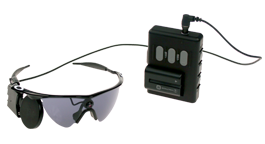
Bionic Eye Restores Vision To Blind Man With Dry Age-Related Macular Degeneration
For a few years now, a company called Second Sight has been proving that its visual prosthesis can actually restore some useful vision to blind patients. Now the company has announced the first successful implant of its implant called Argus II Retinal Prosthesis System in a dry age-related macular degeneration (AMD) patient, proving that even more vision loss diseases can be cured.

Dry AMD is a type of impairment that affects 85% of AMD patients. The condition usually develops slowly and will cause gradual loss of the central vision system. Before the successful implantation of the Argus II, there have been very few approved treatment options for Dry AMD.
The Argus II implant surgery was performed on 80-year old Ray Flynn at the Manchester Royal Eye Hospital in the United Kingdom by Dr. Paulo Stanga MD and activated two weeks later. Flynn’s initial reports confirm that he is receiving some useful vision from his new bionic eye.
“The difference between RP and Dry AMD is that RP primarily affects the peripheral vision whereas AMD primarily affects the central vision. Retinal implants for individuals with AMD may restore some useful vision in their central visual field, which is non-functional due to degeneration of the photoreceptors. The goal in restoring this central vision is to provide individuals with AMD more natural vision and ultimately improve their independence and quality of life,” Dr. Paulo Stanga, MD said in a press release. “This is totally groundbreaking research, where positive results from the study could provide advanced Dry AMD patients with a new alternative treatment.”
The implantation is part of the Second Sight’s larger goal to give the blind more options and opportunities, as well as more independence. Earlier in the year, the company tested out the Orion I Visual Cortical Prostheses on animals and hopes to begin testing on humans by 2017. The technology has the potential to cure all forms of blindness.
